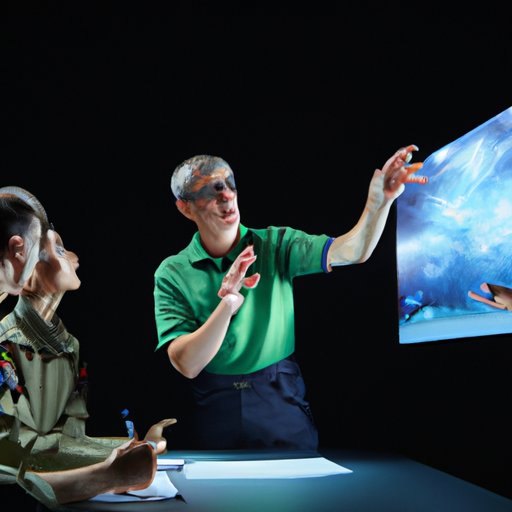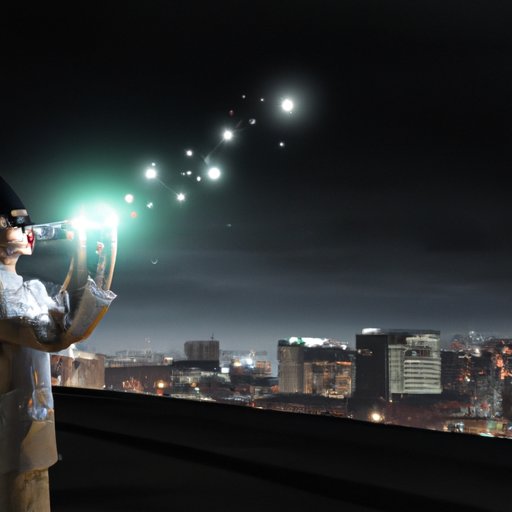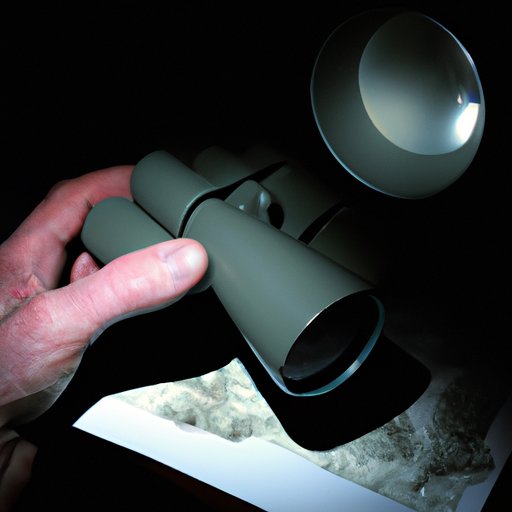Introduction
Night vision is a technology that allows us to see in the dark. It uses a combination of light amplification, image intensification, and thermal imaging to provide a clear view even in low light conditions. This technology has been used for military applications for decades, and is now increasingly being used for civilian purposes such as surveillance and hunting.

Explaining the Physics Behind Night Vision Technology
At the heart of night vision technology is the process of light amplification. This involves taking existing light from the environment and amplifying it so that it can be seen more clearly. The most common way of doing this is through the use of image intensifier tubes. These tubes contain a photocathode which converts incoming photons into electrons. These electrons are then amplified and projected onto a phosphor screen, which produces a visible image.
In addition to using image intensifier tubes, night vision devices also collect and enhance available light. This is done by using lenses to focus the light onto a sensor, which then converts the light into electrical signals. These signals are then processed and amplified, allowing us to see the scene more clearly.
How Different Types of Night Vision Work
There are three main types of night vision technology: image intensifier systems, thermal imaging systems, and low-light sensors. Each type of technology works in a slightly different way.
Image Intensifier Systems
Image intensifier systems are the most common type of night vision technology. These systems use image intensifier tubes to amplify existing light and produce a visible image. They are typically used for short-range viewing, such as in surveillance or hunting applications.
Thermal Imaging Systems
Thermal imaging systems use infrared technology to detect heat radiation. These systems can sense even the smallest amount of heat and convert it into an image. Thermal imaging systems are often used for long-range surveillance, as they can detect objects that may not be visible to the naked eye.
Low-Light Sensors
Low-light sensors are used to detect faint light sources. These sensors are often used in cameras to improve the quality of images taken in low-light conditions. Low-light sensors can also be used to detect movement in the dark, making them useful for security applications.

Examining the Benefits of Night Vision
Night vision offers many benefits, particularly when it comes to safety and surveillance. By allowing us to see in the dark, night vision can help reduce the risk of accidents and crime. It can also help law enforcement personnel monitor their surroundings more effectively.
“Night vision technology can provide an added layer of safety and security in low-light conditions,” said Dr. Stephen Rice, professor of optics at the University of Maryland. “It can enable us to see potential threats before they become a problem, and help us make better decisions in uncertain environments.”
An Overview of Night Vision Equipment
Night vision equipment consists of several components, including lenses, image intensifier tubes, low-light sensors, and thermal imaging systems. Depending on the type of equipment being used, these components can vary in size and complexity.
The most common type of night vision device is the night vision monocular. This device consists of a single lens and image intensifier tube, and is typically used for short-range viewing. Binoculars and goggles are also available, and these devices usually contain two lenses and image intensifier tubes. For long-range surveillance, thermal imaging systems are often used.

Investigating the History of Night Vision
Night vision technology has been around for centuries. Early examples of the technology were developed in the 18th century, but it wasn’t until World War II that the technology was widely used. During the war, the military began using night vision goggles to give soldiers an advantage in night battles.
Since then, night vision technology has evolved and improved. Today, it is used for a variety of applications, from surveillance to hunting.
Comparing Night Vision and Thermal Imaging Technologies
Night vision and thermal imaging technologies have some similarities, but there are also some key differences. Both technologies allow us to see in the dark, but they work in different ways. Night vision uses light amplification to produce a visible image, while thermal imaging uses infrared technology to detect heat radiation.
The two technologies also have different applications. Night vision is typically used for short-range viewing, such as in surveillance or hunting. Thermal imaging is often used for long-range surveillance, as it can detect objects that may not be visible to the naked eye.
Conclusion
Night vision technology has come a long way since its early development in the 18th century. Today, it is used for a variety of purposes, from surveillance to hunting. While night vision and thermal imaging technologies have some similarities, they also have some key differences. Understanding how these technologies work and the advantages they offer can help us make informed decisions about our safety and security.
By understanding the physics behind night vision technology and examining the different types of equipment available, we can better appreciate the importance of this technology and its applications. Knowing the history of night vision and how it has evolved over the years can also help us understand the impact that this technology has had on our lives.
(Note: Is this article not meeting your expectations? Do you have knowledge or insights to share? Unlock new opportunities and expand your reach by joining our authors team. Click Registration to join us and share your expertise with our readers.)
